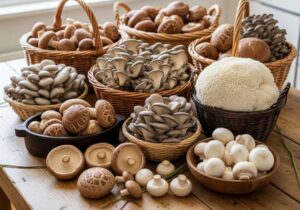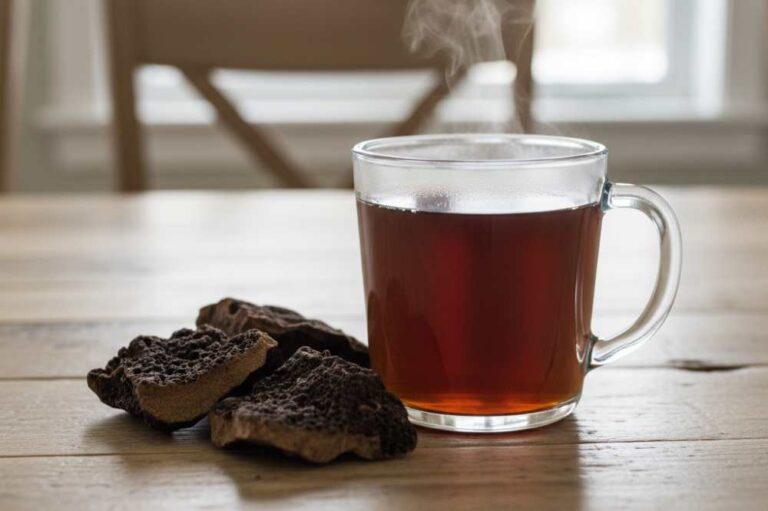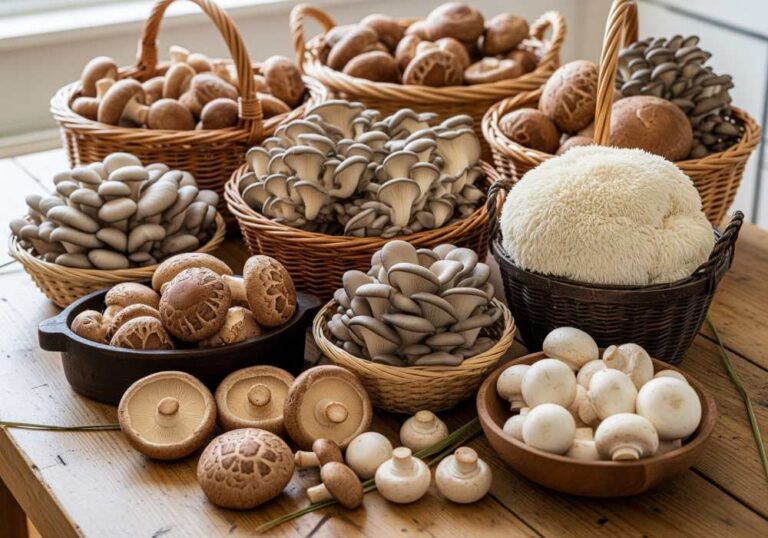Both mushroom coffee and green tea have rich histories and cultural significance. Green tea has been revered in Eastern cultures for centuries, while mushroom coffee is a more recent phenomenon.
The big question here is: which one is better, mushroom coffee or green tea? Honestly, there’s no single answer. It’s like asking which tool is better, a hammer or a screwdriver – it depends on the job!
My goal is to cut through the noise and give you a balanced, practical view of these two intriguing beverages.
Energy Boost: A Gentle Lift or a Strong Push?
If you’re someone who relies on a morning cup to shake off grogginess, the kind of energy boost you get matters. Both mushroom coffee and green tea contain caffeine, but they work in noticeably different ways.

Mushroom Coffee: A Focused Boost with No Crash
Mushroom coffee isn’t just regular coffee with mushrooms thrown in. It’s often made by blending instant coffee with functional mushroom extracts like lion’s mane, cordyceps, and reishi. While caffeine is still present, the mushrooms add an extra layer of cognitive support.
A 2023 study from the University of Queensland found that lion’s mane mushrooms had a significant impact on the growth of brain cells and improving memory. Cordyceps, on the other hand, has been linked to improved oxygen utilization, making it a favorite among endurance athletes.
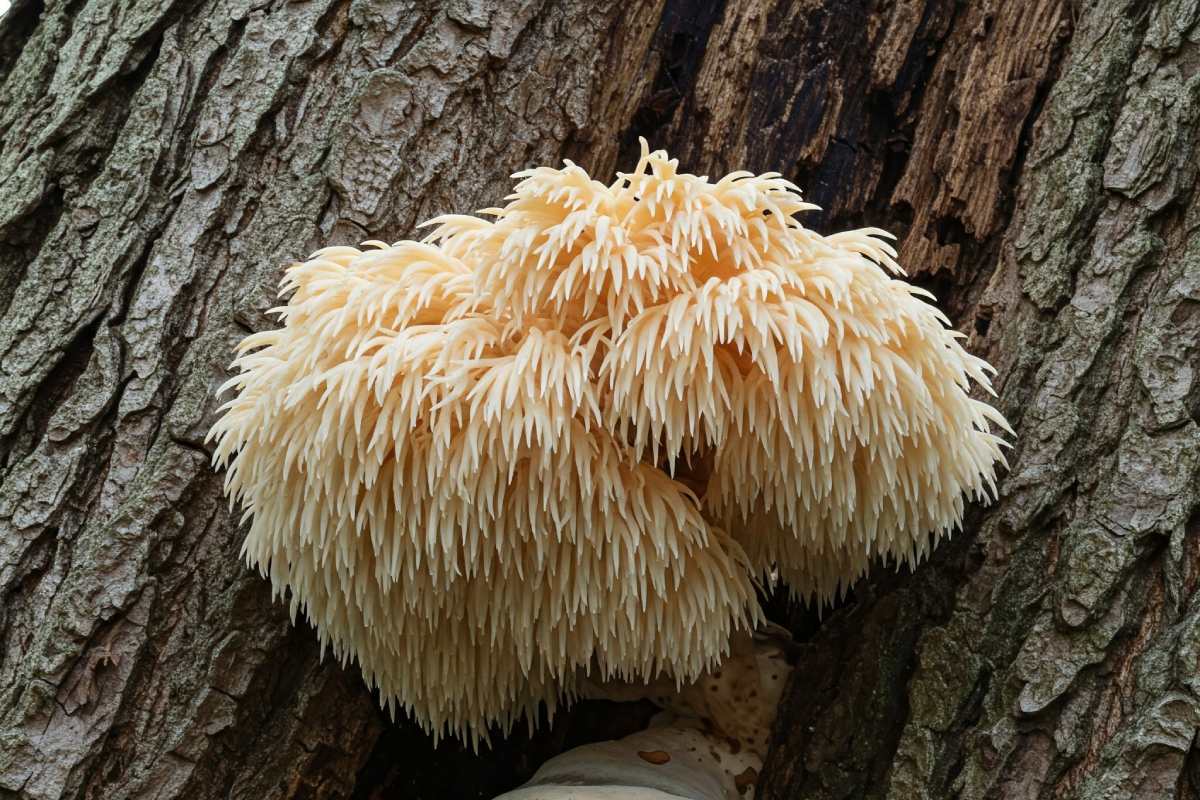
The combination of caffeine and adaptogenic mushrooms means a clear, steady focus without the jittery spikes or crashes typical of regular coffee.
Green Tea: A Calm Yet Alert State
Green tea has a lighter caffeine content (30-50 mg per cup) compared to mushroom coffee. But what makes it unique is L-theanine, an amino acid that promotes relaxation without drowsiness.
A 2008 study investigated the combined effects of L-theanine and caffeine on cognitive performance and mood. The combination of L-theanine and caffeine improved certain aspects of cognitive performance and mood compared to caffeine alone or placebo.
That’s why many people describe the green tea buzz as a “calm focus” rather than an energy jolt.
Green tea might be a better option if coffee makes you feel anxious or overstimulated. It delivers a subtle lift, making it great for those who prefer sustained energy without a hard crash.
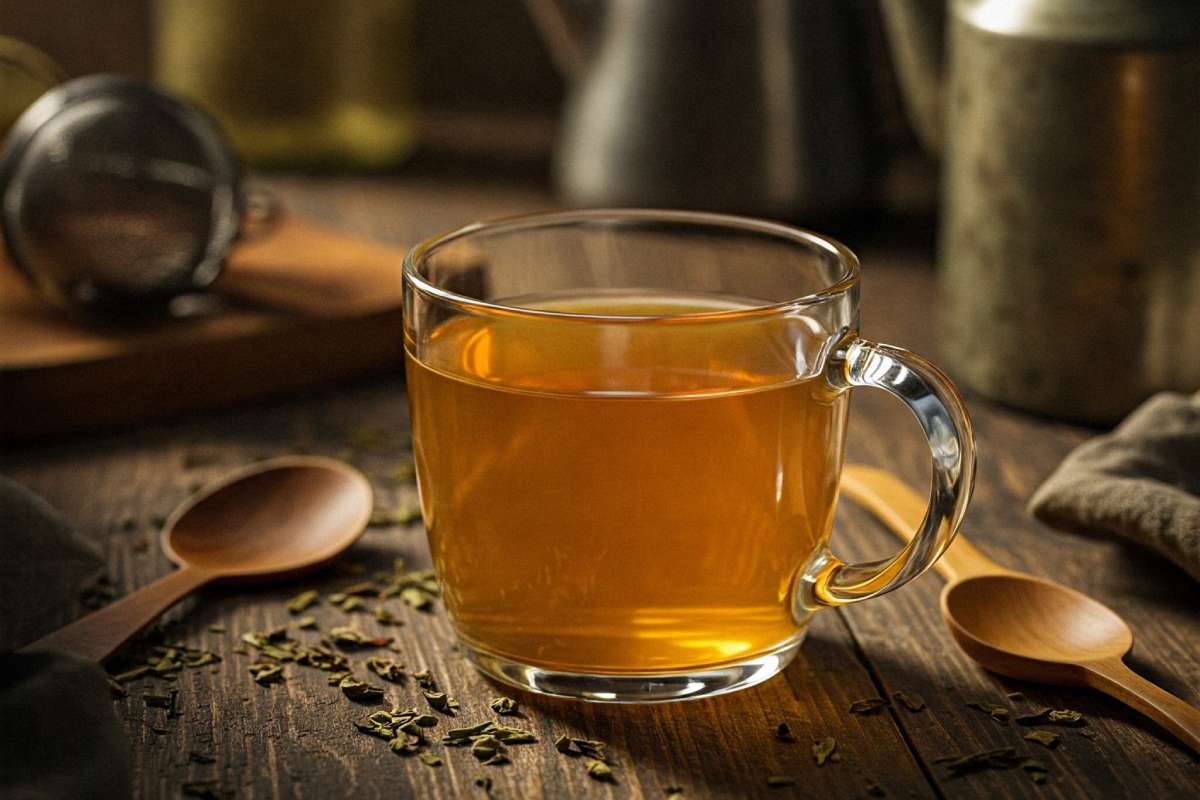
Which One is Better?
It depends on what kind of energy you need:
- If you’re looking for sharp focus and productivity, mushroom coffee is the way to go.
- Green tea is your best bet if you prefer a gentle, meditative energy.
Health Benefits: What Does Science Say?
Both mushroom coffee and green tea have impressive health claims, but what does the research support?
Mushroom Coffee: Immune Support
One of the biggest selling points of mushroom coffee is its functional mushroom content, which may offer brain-boosting and immune-supporting benefits. Besides lion’s mane, which we already discussed for its brain cell growth, there is:
- Cordyceps: Traditionally used in Chinese medicine, it has been shown to increase ATP production, which helps with physical stamina and energy.
- Reishi: Often called the “mushroom of immortality,” reishi is known for its immune-boosting and stress-reducing properties.

Another practical benefit? Mushroom coffee is less acidic than regular coffee, making it easier on the stomach—a great option for those with acid reflux or digestive issues.
Green Tea: Antioxidant Powerhouse
Green tea, on the other hand, is loaded with polyphenols, particularly catechins, which are powerful antioxidants.
EGCG (Epigallocatechin Gallate): One of the most potent antioxidants in green tea, EGCG has been linked to reduced inflammation, heart health, and potential anti-cancer properties.
Metabolism & Fat Burning: Studies suggest that green tea slightly boosts metabolism, helping the body burn calories more efficiently. However, the effect is small and works best when combined with a healthy diet and exercise.
To compare this with mushroom coffee’s potential impact on weight, read our article: Mushroom coffee and weight loss.

Brain Health: Green tea’s L-theanine + caffeine combo has been shown to enhance memory, reaction time, and overall cognitive function.
Which One is Healthier?
- If you’re looking for immune support, brain function, and a coffee alternative, mushroom coffee is a solid choice.
- If you want a potent source of antioxidants and heart health benefits, green tea is unbeatable.
Digestive Impact: Gentle or Hard on the Stomach?
Your morning drink should work with your body, not against it. If you’ve ever had an upset stomach after coffee or tea, you’ll want to know which option is easier on digestion.
Mushroom Coffee: A Gut-Friendly Option?
Regular coffee is acidic and can trigger issues like acid reflux, bloating, and stomach discomfort. However, mushroom coffee is naturally less acidic, making it a gentler alternative for those with acid sensitivity.
Lower Acidity: The addition of mushrooms balances the pH, making it easier on the stomach.

Prebiotic Properties: Some mushrooms, like lion’s mane and reishi, contain prebiotics that may support gut health by feeding beneficial bacteria.
These can help with special dietary needs, like a low FODMAP diet.
Less Caffeine Jitters: With a reduced caffeine content, mushroom coffee may cause fewer digestive disruptions like bloating or cramps.
Mushroom coffee could be a smoother, gut-friendly alternative to regular coffee if you struggle with acid reflux or an upset stomach.
Green Tea: Gentle but Not Always Perfect
Green tea is generally considered mild on the stomach, but that doesn’t mean it’s problem-free.
Tannins Can Cause Irritation: Green tea contains tannins, which can increase stomach acid production. This can lead to nausea or discomfort if consumed on an empty stomach.
Acidity Comparison: While green tea is less acidic than coffee, it’s still slightly acidic, which may bother people with extreme acid sensitivity.
Aiding Digestion: The catechins in green tea have been shown to promote gut health by reducing harmful bacteria and improving digestion.

Green tea is a safe and beneficial choice if you don’t have a sensitive stomach. However, if you experience nausea, try drinking it after meals rather than on an empty stomach.
Adaptogenic Effects: Stress & Mood Support
Modern life is stressful, so your daily drink should help you handle it, not make it worse. Both mushroom coffee and green tea offer mood-balancing effects but work differently.
Mushroom Coffee: Adaptogens for Stress Resistance
The functional mushrooms in mushroom coffee are classified as adaptogens—natural substances that help the body adapt to stress.
- Reishi: Sometimes, it’s also called the “chill-out” mushroom. It helps lower cortisol levels, reducing stress and promoting relaxation .
- Lion’s Mane: Supports mental clarity and may even reduce symptoms of anxiety and depression by promoting nerve growth factor (NGF)
- Cordyceps: Boosts energy and reduces fatigue, making it a good choice for those who feel drained from chronic stress.
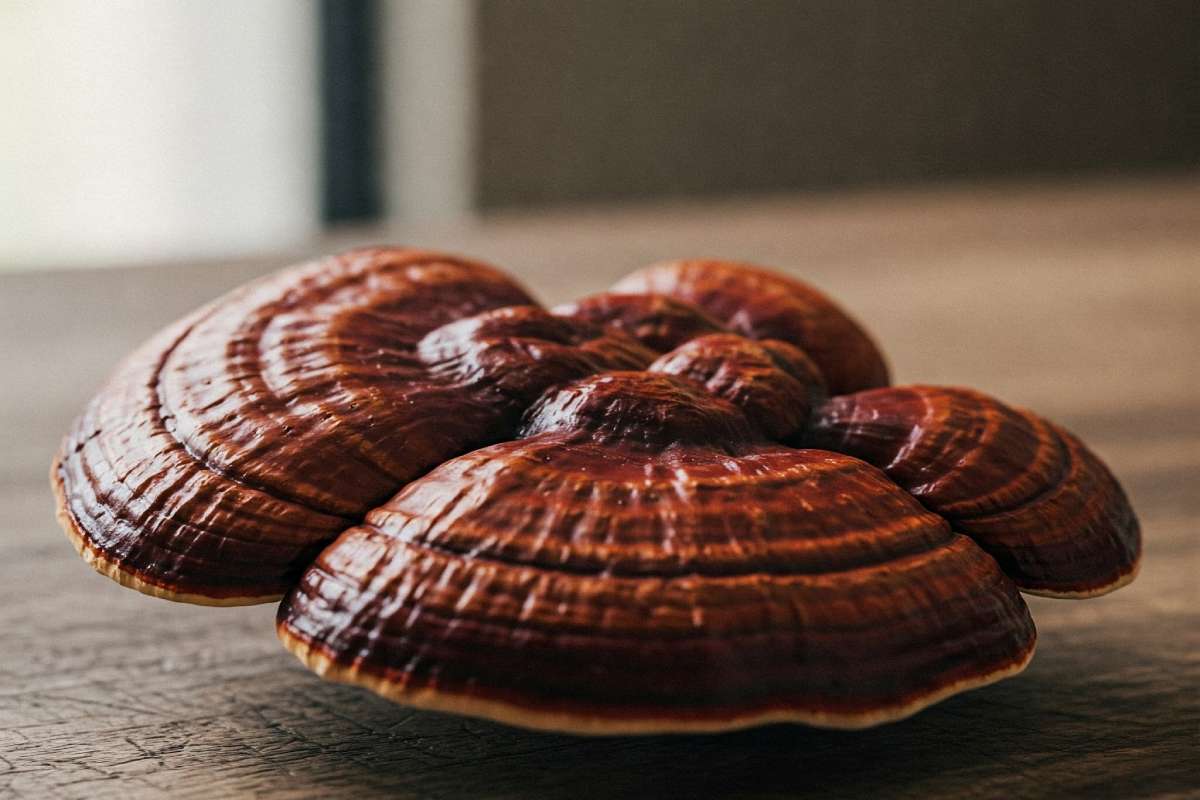
It delivers calm focus while helping the body manage stress better over time. It’s a great option for those who feel burned out.
Green Tea: L-Theanine for a Calm Mind
Green tea’s L-theanine is one of the biggest reasons why it’s associated with stress relief.
- Promotes Relaxation: L-theanine reduces stress and anxiety by increasing alpha brain waves, which are linked to meditation-like calmness.
- Balances Caffeine: Unlike coffee, green tea doesn’t cause jittery highs and crashes because L-theanine softens caffeine’s effects.
- Supports Sleep & Mood: Some studies suggest L-theanine improves sleep quality by promoting relaxation without sedation.

Green tea creates a mellow, meditative state—perfect for people who want mental clarity without stimulation.
Flavor & Drinking Experience: A Matter of Taste?
Taste is subjective, but let’s be honest—what you drink daily should be enjoyable. Both mushroom coffee and green tea have distinct flavors, and your preference will depend on what kind of experience you’re looking for.
Mushroom Coffee: Earthy with a Hint of Coffee
If you expect a strong, bitter coffee flavor, mushroom coffee might surprise you. While it contains real coffee, the addition of functional mushrooms gives it an earthy, slightly umami taste.
Coffee-Like with a Twist: The coffee base still provides the familiar roasted flavor, but mushrooms like reishi and chaga add a subtle nutty or woody note.
Less Bitterness: Because mushroom coffee is lower in acidity than regular coffee, it tends to be smoother and less harsh on the palate.
Texture: Instant mushroom coffee dissolves quickly, making it easy to prepare, but some blends might have a slightly grainy or herbal texture.

If you love coffee but want a milder, less acidic version with added health benefits, mushroom coffee is a solid choice.
Green Tea: Light, Fresh & Customizable
Green tea has a lighter, fresher taste with subtle grassy or vegetal notes. However, the flavor varies depending on the type:
- Japanese Green Teas (Sencha, Matcha): It has a grassy, slightly sweet, and umami-rich taste. Matcha, in particular, has a creamy, full-bodied texture when whisked.
- Chinese Green Teas (Longjing, Gunpowder): Offer a more nutty or toasty profile.
- Flavored Green Teas: Many varieties include flavors like jasmine, mint, or citrus, making them more enjoyable for those who dislike grassy notes.
If you prefer a light, refreshing drink that can be enjoyed hot or cold, green tea is a great option.
Convenience & Preparation: Which One Fits Your Lifestyle?
No matter how good a drink is, if it’s a hassle to prepare, you’re less likely to stick with it. Let’s break down how easy it is to make each one.
Mushroom Coffee: Instant and On-the-Go
Mushroom coffee is typically sold as an instant blend, meaning you only need hot water to prepare it.
- Fast & Easy: Just stir 1-2 teaspoons of mushroom coffee powder into hot water, and it’s ready.
- No Equipment Needed: No coffee machines, filters, or brewing techniques are required.
- Customizable: Can be mixed with milk, plant-based alternatives, or even blended into smoothies.
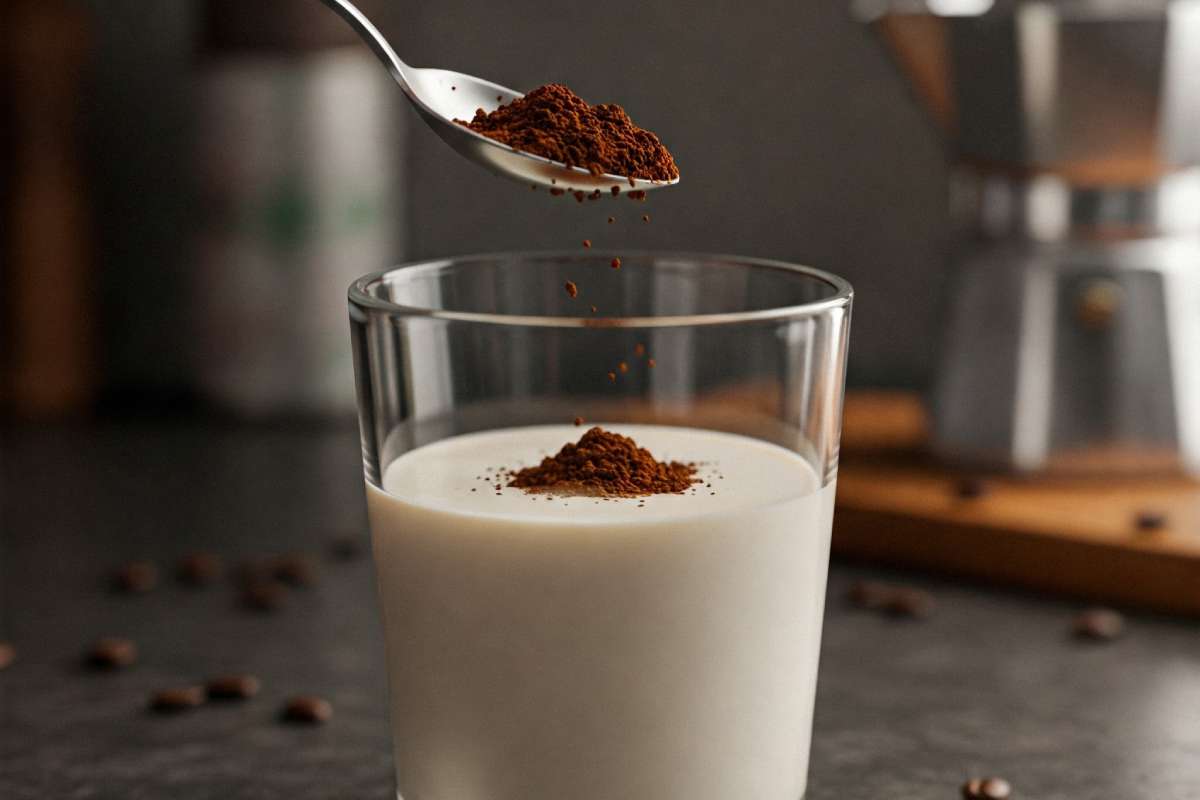
If you need a quick, no-fuss coffee alternative that you can make in seconds, mushroom coffee is ideal.
Green Tea: A Bit More Effort, but Worth It
Green tea is simple to prepare but requires a bit of attention to get the best flavor.
- Loose Leaf vs. Tea Bags: Loose-leaf green tea offers better flavor but requires a tea strainer or infuser. Tea bags are more convenient but may contain lower-quality leaves.
- Water Temperature Matters: Brewing at too high a temperature (above 175°F/80°C) can make green tea bitter.
- Steeping Time: Ideally, 1-3 minutes. Longer steeping releases more tannins, which can make the tea harsh and astringent.
- Matcha Needs Whisking: If you choose matcha, you’ll need a bamboo whisk to create the proper frothy texture.
Green tea is worth it if you enjoy a calming, mindful tea ritual and are willing to do a little prep work.
My Personal Take
If I had to pick one, I’d lean toward mushroom coffee—not just for its adaptogenic benefits but because it gives me a smooth energy boost without the caffeine crash. It’s easy to prepare, gentle on my stomach, and honestly, the earthy taste grew on me over time.
That said, I still enjoy a good cup of green tea when I want something light and refreshing, especially in the afternoon.





